Tracking whimbrels to tropical wintering grounds
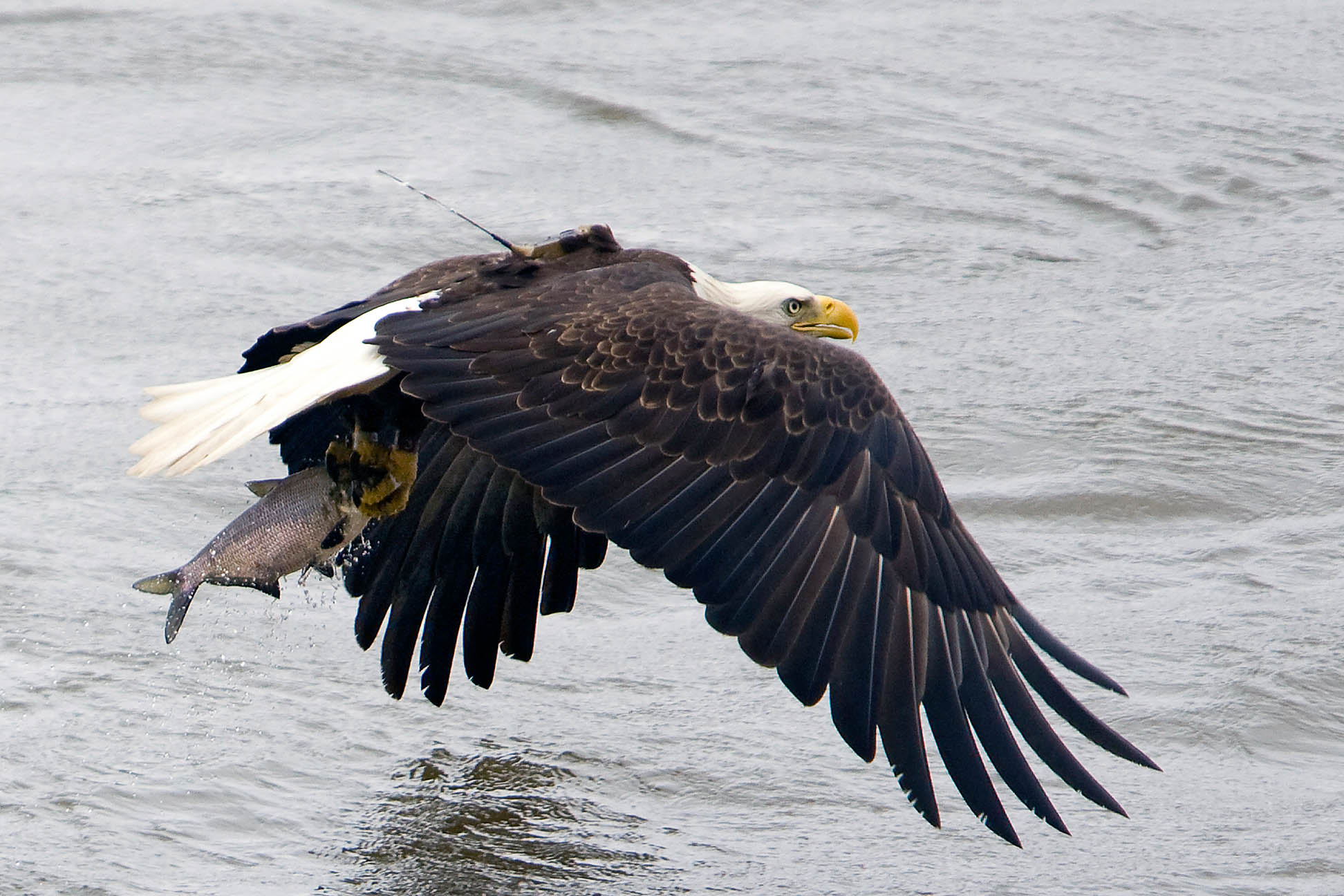
Conowingo Dam: a great place to view eagles and to resight eagle bands
September 6, 2009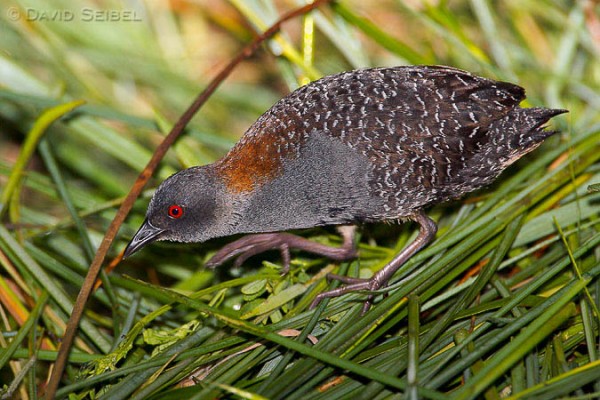
Working for conservation and management of the Eastern black rail
September 8, 2009
Written by Bryan Watts & Fletcher Smith
September 7, 2009
The Center for Conservation Biology (CCB) and a growing list of partners including The Nature Conservancy, U.S. Fish and Wildlife Service, and the Virginia Coastal Zone Management Program continue to investigate whimbrel migration. For the second year, a field crew led by Fletcher Smith worked with whimbrels during both the spring and fall migration periods. The focus of this work continues to be the documentation of migration routes, migratory staging sites, and linking breeding and wintering areas.

The rocket net set-up in this marsh is well-hidden from shorebirds (and people!). The net is furled in a box (hidden at the center of image) until the rocket charge propels it. Photo by Fletcher Smith.
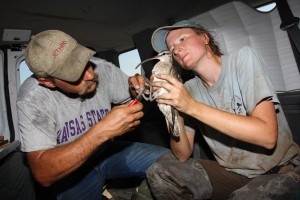
Jethro Runco and Shannon Ehlers band a whimbrel. Photo by Bart Paxton.
During the early fall months, whimbrel were captured and fitted with transmitters. Four birds were fitted with 9.5 gram, solar-powered, satellite transmitters. Ten birds were fitted with coded, VHF transmitters to investigate local movements and residency times. Whimbrels departed the Eastern Shore between 1 September and 20 September. One transmitter deployed during spring trapping was active into the fall season (see May-August 2009 story, Flight of Hope the Whimbrel).

Whimbrel equipped with an coded VHF transmitter. Photo by Fletcher Smith.
Several transoceanic flights were captured during the fall migration. Two whimbrels migrated from the Eastern Shore directly to the shores of South America (Venezuela and Guyana). The other two transmittered birds flew to the Dominican Republic, staging there before continuing their migration to coastal South America. These flights took an average 95 hours to complete. The average distance traveled during these flights was 2,697km. None of the four fall transmittered birds flew directly to their wintering grounds, all staged briefly at one or more sites in the Caribbean or in South America before continuing on to wintering grounds. Hope, a whimbrel transmittered in the spring, flew directly from the upper Hudson Bay to wintering grounds in the US Virgin Islands. The 4 fall satellite transmittered whimbrels are currently in Western Hemisphere Shorebird Reserve Network (WHSRN) Sites of Hemispheric Importance. These critical staging and wintering areas are important to survivorship of whimbrels.

Map A – Webb’s migration through mid-January 2010; current location is coastal Brazil. Photo by the Center for Conservation Biology.
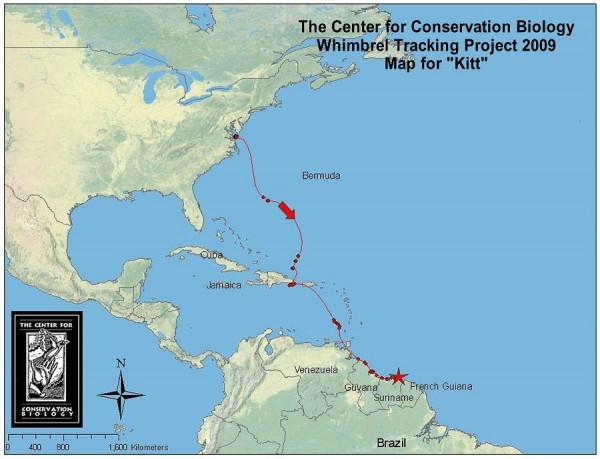
Map B – Kitt’s migration through mid-January 2010; current location is coastal Brazil. Photo by the Center for Conservation Biology.
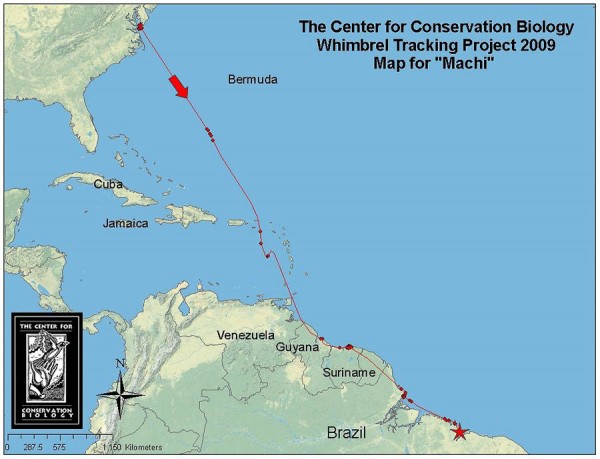
Map E – Machi’s migration through December 2009. Transmitter signal was lost in late December. Photo by the Center for Conservation Biology.

Map C – Pongo’s migration through mid-January 2010; current location is coastal Brazil. Photo by the Center for Conservation Biology.
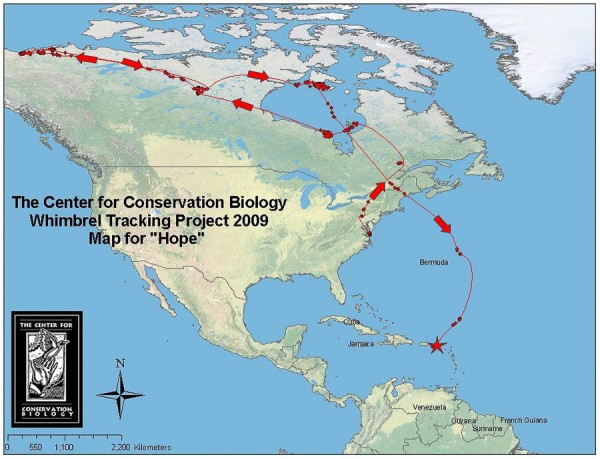
Map D – Hope’s migration through mid-January 2010. Photo by the Center for Conservation Biology.
Expanded work on this project is planned for Spring 2010.
Project sponsored by The Center for Conservation Biology (CCB), The Nature Conservancy (TNC), Virginia Coastal Zone Management Program (CZM), and US Fish & Wildlife Service (USFWS).



